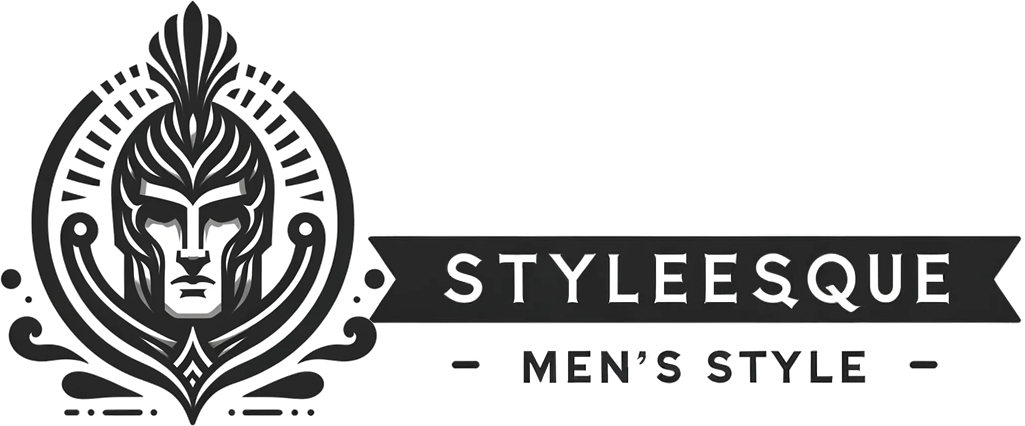The Resurgence of Classic Men’s Hats: Embracing Tradition in Modern Style
Published Thursday, May 16, 2024 By Styleesque Staff

The interplay between classic and contemporary elements in men’s fashion is an enduring dance of style and tradition. In recent years, there’s been a noticeable resurgence in the popularity of classic men’s hats. This revival is more than a fleeting trend; it is a testament to the timeless appeal that these accessories have always possessed. As modern fashion continuously evolves, it integrates and often reinterprets the distinguished look of vintage accessories, creating a unique fusion that honors the past while embracing the future.
In essence, classic hats such as fedoras, top hats, and Panama hats are experiencing a revival in the contemporary fashion scene. These hats, which were once staples of a gentleman’s wardrobe, are now being paired with modern outfits, adding a touch of classic charm to the fashion-forward individual’s attire. The rediscovery of these vintage styles as key pieces in modern fashion showcases a blend of tradition and modern elegance.
The appeal of classic hats in today’s fashion lies in their versatility and the distinct character they bring to an ensemble. Easy to integrate with both casual and semi-formal attire, these hats offer men an opportunity to distinguish their style. The classic fedora, with its wide brim and creased crown, exemplifies this blend of past and present, providing a sophisticated option that can elevate any contemporary outfit. This resurgence is not accidental; it reflects a growing appreciation for quality craftsmanship and a nod to fashion’s enduring legacy.
The Historical Significance of Men’s Hats
Men’s hats have long been a hallmark of style and status, evolving through the decades to signify both personal and cultural identity.
Evolution of Hat Styles Through the Decades
Hats in men’s fashion have seen significant transformation from practical headwear to symbols of status. In the late 19th century, top hats were synonymous with sophistication, often worn by the elite to display their social standing. This trend carried into the early 20th century until more practical hats like fedoras gained prominence, favored for their durability and style. By the mid-1900s, hats like the flat cap and newsboy hat became associated with working-class men due to their functional design and affordability.
As the decades progressed, the 80s and 90s saw a shift towards more casual styles, with the bucket hat becoming a staple in the streetwear scene. These hats not only served a practical purpose but also played a crucial role in the self-expression and collective identity of the youth during these eras.
Iconic Hat Types and Their Origins
The fedora, originating in the early 20th century, has maintained its timeless appeal due to its strong association with classic cinema and traditional craftsmanship. Its distinctive shape and versatility have allowed it to adapt to modern fashion while retaining its vintage charm.
The trilby, often confused with the fedora due to its similar appearance, possesses a shorter brim and higher crown, setting it apart as a hat that epitomizes nostalgia and individuality. Tracing back to the hat’s roots reveals its cultural significance that has been preserved through the ages.
In tropical climates, the Panama hat emerged out of necessity for lightweight, breathable headwear. It has since become an icon of traditional elegance, woven from the pliable leaves of the toquilla palm and often associated with seaside sophistication.
Conversely, top hats, which were once a staple in formal men’s wardrobe, are now predominantly associated with vintage or ceremonial occasions, demonstrating the shift from everyday wear to a symbol of tradition and ceremony.
Through these iconic types of headwear, one can observe a journey that reflects not just fashion trends but also the cultural and historical pathways that have shaped men’s style preferences. Whether it is the fedora’s link to the noir detectives or the top hat’s association with the aristocracy, these hats have solidified their places in the annals of fashion history.
The Anatomy of a Quality Hat

When considering the resurgence of classic men’s hats in contemporary fashion, it is important to examine the quality of these pieces. Two key elements define a hat’s quality: the materials and craftsmanship that go into its creation, and the design elements that create its distinct silhouette.
Materials and Craftsmanship
The foundation of any high-quality hat begins with its materials. Fine wool, leather, cotton, and silk are commonly used, each bringing its own level of comfort, durability, and aesthetic appeal. Wool hats offer warmth and a timeless elegance that is hard to match. Leather hats provide durability and a unique patina that develops over time. Cotton is favored for its breathability, making it a suitable choice for warmer climates, while silk adds a touch of luxury and is often used as a lining material for additional comfort.
The craftsmanship involved in transforming these materials into a quality hat is an intricate process. It includes precise stitching, the careful cutting of fabrics, and a keen attention to the finish of each hat. True craftsmanship ensures that the hat does not only look good but also withstands the test of time, maintaining its shape and appeal through regular wear.
